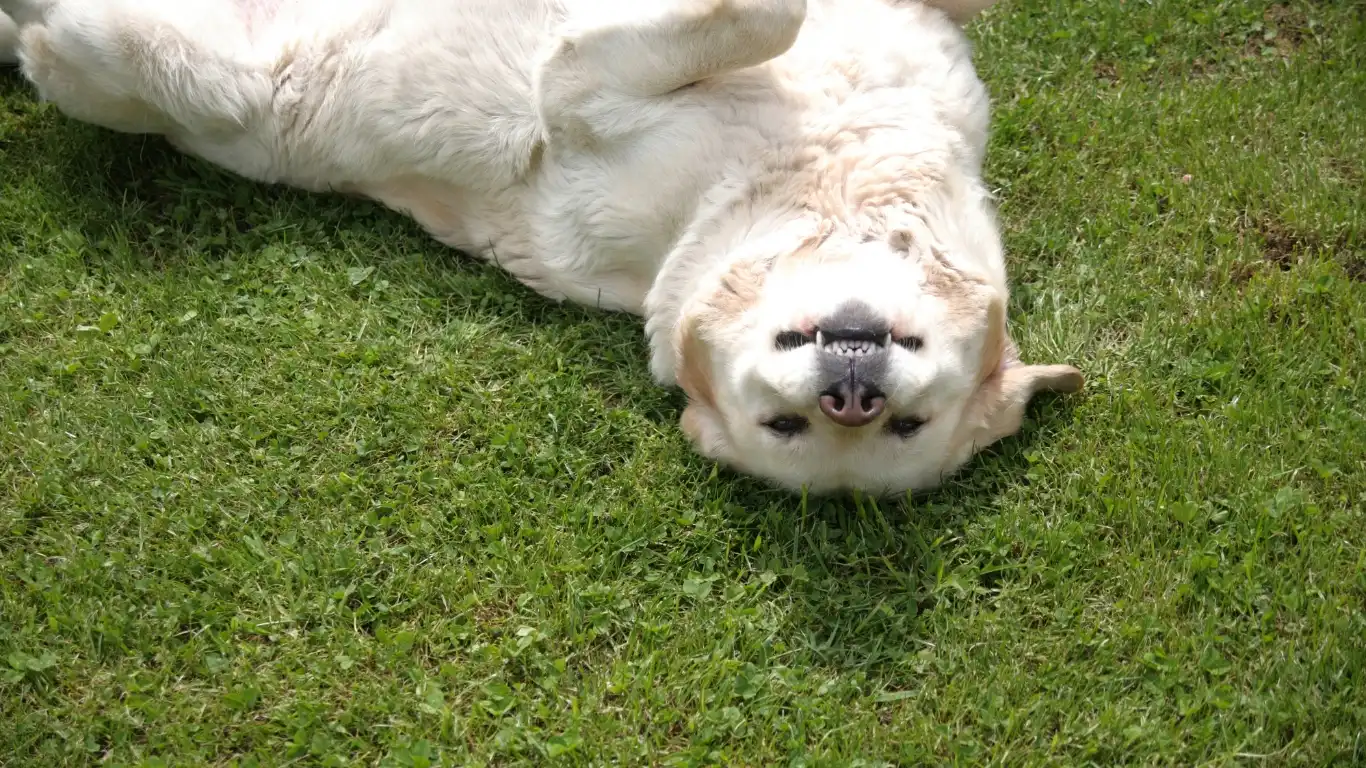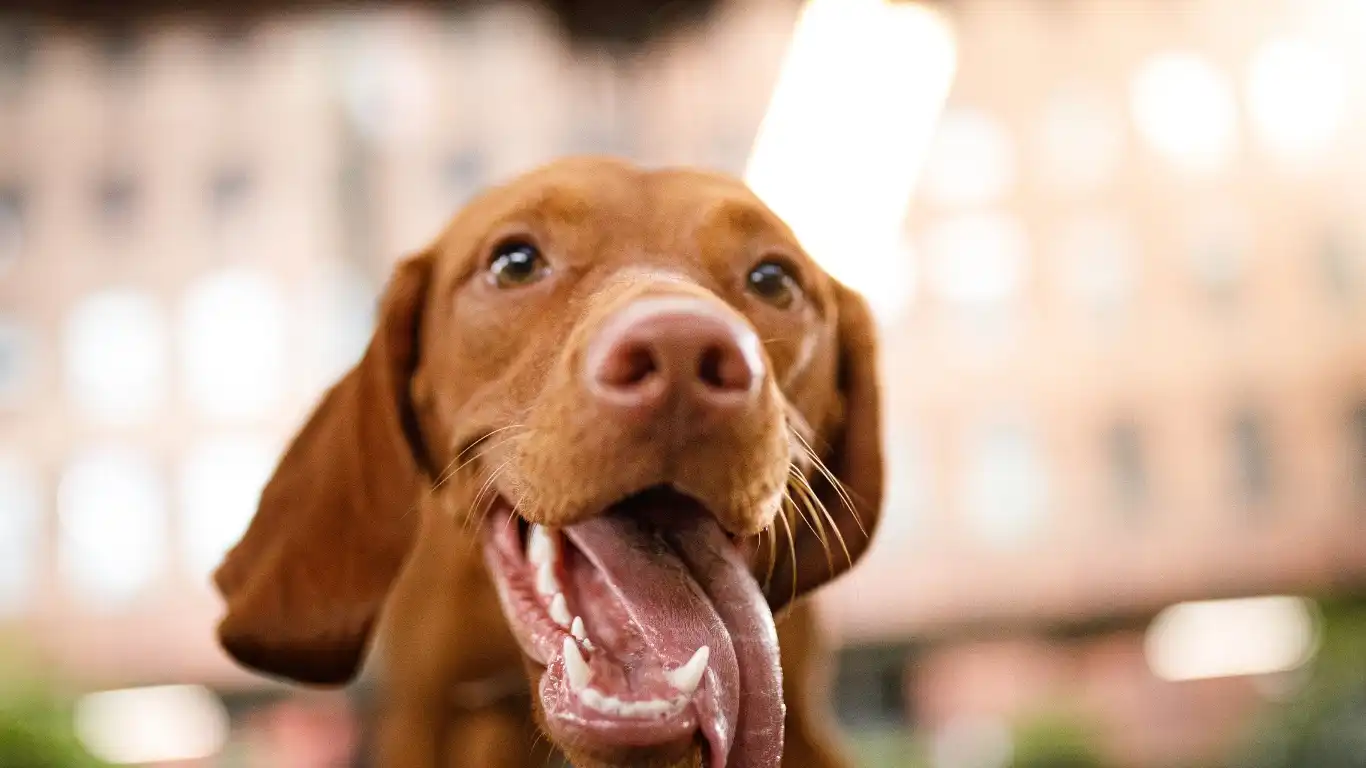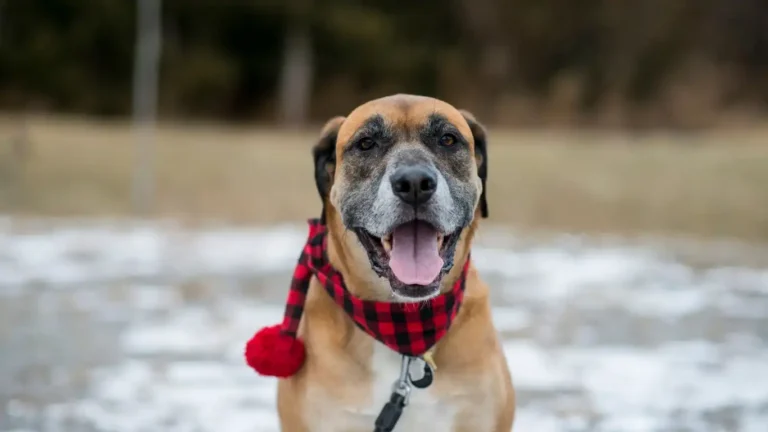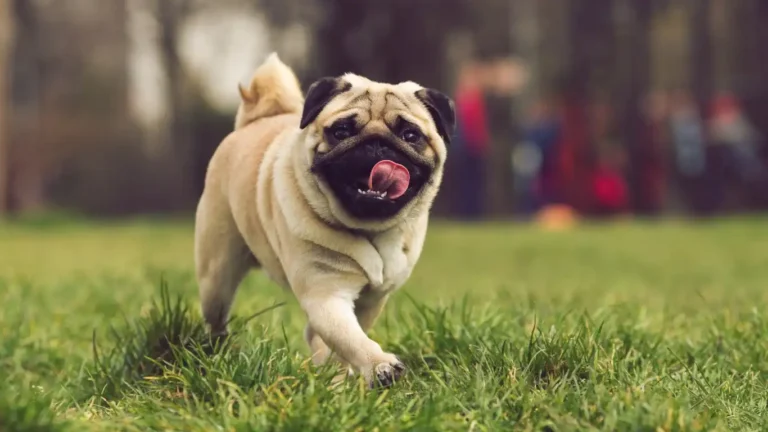Top 7 Best Home Remedies for Dry Dog Paws That Work Wonders
As a Veterinary Technician specializing in nutrition, I’ve seen my fair share of pets with paw-related issues. One common problem that many pet owners overlook is dry, cracked, or sore dog paws. Dry paws are more than just an aesthetic concern; they can lead to discomfort, pain, and potential infections if left untreated. As a pet parent myself, I know how worrying it can be to see your furry friend suffering, especially when it seems like there’s not much you can do. But don’t worry, there are several home remedies you can try that can soothe and heal your dog’s dry paws, and best of all, they’re often made from natural ingredients you probably already have at home!
Understanding Dry Dog Paws: Causes and Symptoms

Before diving into the best home remedies for dry dog paws, it’s important to understand what causes dry paws in the first place. In my experience as a veterinary technician, I’ve found that dry paws are usually the result of a combination of factors, which can include environmental conditions, health issues, and even your dog’s behavior. Let’s break it down:
- Weather conditions: Cold winter air, salt on roads during snowy months, and dry heat in the summer can all contribute to dry paws. Just like human skin, your dog’s paws can get chapped and cracked from extreme weather.
- Environmental irritants: Paws come into contact with a wide range of surfaces, from hot pavements to rough terrain. If your dog is running through tall grasses, sand, or salt-laden roads, these can irritate their paw pads and lead to dryness.
- Health issues: Sometimes, underlying health problems like allergies or hormonal imbalances can manifest as dry, flaky paws. In these cases, treating the root cause is key.
- Behavioral factors: Dogs that lick or chew their paws excessively may be more prone to dry and cracked pads. This can be a sign of boredom, anxiety, or skin irritation.
Now that we know what causes dry paws, let’s take a look at the symptoms to watch out for. If you notice any of the following, it’s time to start treating your dog’s paws:
- Cracked or bleeding pads
- Rough or flaky skin on their paws
- Excessive licking or chewing of the paws
- Visible redness or swelling
- Pain or sensitivity when walking
If your dog is showing any of these signs, it’s essential to start treating their paws as soon as possible. So, what can you do at home to help? Let’s dive into some of the best home remedies for dry dog paws that you can try right now!
The Best Home Remedies for Dry Dog Paws

1. Coconut Oil: A Natural Moisturizer
When it comes to natural remedies, coconut oil is a game-changer. I’ve recommended coconut oil to countless pet owners, and in my personal experience, it works wonders for dry paws. The oil is packed with fatty acids, which are great for moisturizing the skin. Plus, it has anti-inflammatory and antibacterial properties, which can help protect your dog from infections that may develop from cracked paws.
Here’s how to use coconut oil to treat your dog’s dry paws:
- First, clean your dog’s paws gently using a damp cloth to remove dirt and debris.
- Next, take a small amount of coconut oil (about a teaspoon should do) and massage it into their paw pads.
- Be sure to cover all areas of the paws, paying extra attention to any cracks or rough spots.
- Allow your dog to lick it off if they want—it’s totally safe to ingest in small amounts.
If you’re concerned about your dog licking it off too much, you can always apply the oil before bed and keep them in a soft dog bootie overnight for extra protection.
2. Oatmeal Soak: A Soothing Relief
If your dog’s paws are really dry and cracked, an oatmeal soak can provide instant relief. Oatmeal has natural anti-inflammatory properties that help soothe irritated skin. It’s especially useful if your dog’s paws are inflamed or showing signs of redness.
To prepare an oatmeal soak, follow these steps:
- Grind some plain, unsweetened oats in a blender or food processor until they become a fine powder.
- Fill a basin or tub with lukewarm water and add the oatmeal powder. Stir to mix it into the water.
- Gently dip your dog’s paws into the oatmeal solution, allowing them to soak for 5-10 minutes.
- After soaking, pat their paws dry with a clean towel. Avoid rubbing, as this could irritate the skin further.
Repeat this soak a few times a week to keep your dog’s paws soft and moisturized.
3. Aloe Vera: A Healing Touch
Aloe vera is another fantastic natural remedy for dry dog paws. It’s well-known for its soothing and healing properties, making it ideal for cracked or inflamed skin. Just like coconut oil, aloe vera can also prevent infection, helping to keep your dog’s paws in top condition.
When using aloe vera on your dog’s paws, make sure to use pure aloe vera gel. Avoid anything with added fragrances or chemicals. You can apply it directly to the paw pads, massaging it in gently. Just be cautious and monitor your dog to make sure they don’t ingest too much of the gel, as it can cause some gastrointestinal upset in large quantities.
These are just a few of the best home remedies for dry dog paws, but they’re some of my personal favorites. With regular care and attention, you can help your dog’s paws stay healthy and comfortable year-round. If the dryness persists or worsens, don’t hesitate to reach out to your vet for further guidance. Your dog’s comfort is always worth the effort!
4. Beeswax: A Natural Shield for Sensitive Paws

If you’ve ever used beeswax for skin care yourself, you know how well it can create a barrier against harsh conditions. The same goes for your dog’s paws. Beeswax is a fantastic, natural ingredient that forms a protective layer on your dog’s paw pads. This barrier helps lock in moisture, while also shielding against the elements, such as snow, ice, and hot pavement. It’s especially great for dogs that spend a lot of time outdoors.
What I love about beeswax is its ability to stay on the paws longer than some other moisturizers. This can be a huge help when your dog needs extra protection but won’t keep a bootie on (trust me, I’ve tried!)
To make a simple beeswax paw balm, you’ll need:
- 1 tablespoon of beeswax pellets
- 1 tablespoon of coconut oil
- 1 teaspoon of shea butter (optional, but adds extra moisture)
Here’s how to make your own beeswax paw balm:
- Melt the beeswax and coconut oil in a double boiler or microwave in short bursts, stirring in between.
- Once the mixture has melted, stir in the shea butter if you’re using it.
- Pour the balm into a small container and allow it to solidify.
- Once cooled, you can apply it to your dog’s paws by gently massaging it in.
This balm will provide a layer of protection that helps keep moisture in and external irritants out. For dogs with chronic paw dryness, applying the balm daily will offer the best results. The beeswax also helps to promote healing of any existing cracks, so you’ll notice improvements over time.
5. Olive Oil: Moisturizing and Healing

When I’m talking about natural remedies for dry dog paws, olive oil always comes up. It’s something I keep in my kitchen, and I’ve used it on my dog’s paws more times than I can count. Olive oil is rich in antioxidants, vitamins A, D, and E, all of which are great for promoting healthy skin. Plus, it’s a gentle moisturizer that’s safe for dogs if ingested in small amounts.
Olive oil not only helps moisturize but can also assist in healing any small cuts or abrasions on your dog’s paws. It’s one of those multi-purpose remedies that I swear by. The best part? It’s simple to use, and you probably already have it sitting in your pantry!
To use olive oil for dry dog paws, follow these steps:
- Apply a few drops of olive oil directly to your dog’s paw pads.
- Massage the oil gently into the paws, paying attention to any cracks or rough patches.
- Let the oil soak in for a few minutes, then wipe off any excess.
- If your dog likes to lick their paws, I recommend doing this right before bed so they have time to absorb the oil overnight.
For dogs with severe dryness or cracks, I’ve found that doing this a couple of times a day can really help speed up the healing process. And, let’s be real—olive oil makes your dog’s paws feel so soft, you’ll want to cuddle them even more than usual!
6. Vitamin E: For Extra Nourishment

Vitamin E is known for its skin-healing properties, and it’s something I often recommend to pet owners dealing with dry paws. This vitamin helps restore moisture and elasticity to the skin, making it especially beneficial for cracked or damaged paw pads. In fact, when used regularly, Vitamin E can significantly improve the appearance and texture of your dog’s paws.
One of my favorite ways to use Vitamin E for dry dog paws is by applying Vitamin E oil directly to the paws. You can purchase it in a liquid form, or you can break open a Vitamin E capsule to use the oil inside. Here’s how I typically recommend applying it:
- Clean your dog’s paws gently with a damp cloth.
- If using a capsule, carefully pierce the Vitamin E capsule and squeeze out the oil.
- Apply the oil to your dog’s paw pads and massage it in until absorbed.
Vitamin E oil is an excellent addition to your dry paw routine, especially if you’re dealing with cracks or excessive dryness. Its healing properties can go a long way in helping your dog’s paws recover and stay soft. Just like olive oil, Vitamin E is safe if ingested in small amounts, but it’s always a good idea to monitor your dog to make sure they’re not licking too much off.
7. Regular Paw Checks: Prevention Is Key
One thing I can’t stress enough is the importance of regular paw checks. In my practice, I’ve seen so many dogs whose paw problems could’ve been avoided with a little routine care. Just like you would check your own skin for dryness or irritation, it’s essential to inspect your dog’s paws regularly.
When you check your dog’s paws, look for:
- Cracks, cuts, or blisters
- Signs of redness or inflammation
- Excessive dryness or rough patches
- Debris or foreign objects lodged between the toes
By inspecting their paws regularly, you can catch problems early and prevent them from becoming more serious. It’s also a great time to make sure their nails aren’t too long and that their pads aren’t too worn down. Plus, giving your dog’s paws a little massage can help improve blood circulation, which is especially beneficial for older dogs or dogs with arthritis.
Regular checks can help you stay ahead of potential issues, ensuring that your dog’s paws stay healthy and comfortable. This is a quick, simple way to avoid more serious paw problems down the line, and it’s something I encourage all dog owners to do.
8. Natural Paw Protection: Preventing Dryness from the Start

As much as we want to help our dogs when they’re dealing with dry paws, prevention is always better than cure. In my experience, taking proactive steps to protect your dog’s paws from the get-go can save you a lot of time, effort, and stress later on. I’ve worked with many pet owners who didn’t realize how much environmental factors could affect their dog’s paws—especially during extreme weather or long walks. That’s why it’s essential to consider preventative measures to keep those paws safe and healthy year-round.
One of the best ways to prevent dry paws is by limiting your dog’s exposure to harsh elements. If your dog enjoys outdoor activities like hiking, running, or long walks, consider using dog booties. I know, I know—getting a dog to wear booties isn’t always easy, but trust me, they really do make a huge difference! Booties can protect your dog’s paws from salt, ice, hot pavement, and rough terrain.
If your dog is resistant to wearing booties, you can also consider using paw balms or waxes that offer a protective coating. These products are designed to shield paws from the elements while still allowing them to breathe. Many of these paw protectors are made from natural ingredients like beeswax and shea butter, so they’re safe and effective for regular use.
Another tip for preventing dry paws is to always wipe your dog’s paws clean after outdoor activities. After walks, be sure to clean off any debris, dirt, or harmful chemicals that could dry out their paws or cause irritation. I’ve found that many dogs suffer from paw dryness simply because they carry harmful substances like road salt or dirt into the house without being cleaned off. This extra step can make a huge difference in keeping their paws healthy!
9. Professional Help: When to Seek Veterinary Advice
While many home remedies work wonders for dry dog paws, there are times when professional help is necessary. If you’ve been treating your dog’s paws at home but aren’t seeing any improvement or if the dryness seems to be worsening, it might be time to consult your veterinarian.
In my experience, persistent or severe paw dryness can sometimes be a symptom of an underlying health condition. For example, dogs with allergies, hormonal imbalances, or autoimmune diseases can experience chronic paw dryness as part of their condition. If you notice any of these signs, it’s important to have your vet evaluate your dog’s overall health:
- Persistent cracking, bleeding, or sores on the paws
- Excessive licking or chewing of the paws
- Changes in behavior, like limping or avoiding walks
- Signs of infection (pus, swelling, or foul odor)
At the vet, they may run tests to identify any allergies, fungal infections, or systemic issues that could be contributing to your dog’s paw problems. It’s important to catch any underlying issues early to prevent long-term discomfort or health issues for your dog.
If you’re unsure whether it’s time to visit the vet, a good rule of thumb is that if your dog’s paw issues last more than a few weeks despite home treatment, it’s better to be safe and seek professional advice.
10. Keep Your Dog Hydrated: The Importance of Proper Nutrition
As a veterinary technician with a focus on nutrition, I can’t stress enough how important proper hydration and nutrition are when it comes to your dog’s overall health—including their paw health. When your dog isn’t getting the right nutrients, their skin can become dry and brittle, making their paws more susceptible to cracking.
Make sure your dog has access to fresh water at all times. Dehydration is one of the leading causes of dry skin and paw problems, so maintaining proper hydration is key to overall health. In addition, a balanced diet rich in fatty acids, like omega-3s, can help keep your dog’s skin moisturized and healthy. Fish oil supplements are a great option if your dog isn’t getting enough omega-3s through their food.
I’ve seen dogs with chronic paw issues make significant improvements simply by adjusting their diet and ensuring they stay hydrated. Talk to your vet about whether you should add supplements like omega-3 fatty acids to your dog’s diet for extra skin support. It’s always worth considering if you’re dealing with recurring paw problems.
11. References & Further Reading
If you want to learn more about the health of your dog’s paws, there are many great resources available. I always recommend checking out reputable sources to get accurate information that can help you care for your dog’s health. Here are a few links that can guide you:
- PetMD: Comprehensive Pet Care
- American Kennel Club: Dog Health
- National Institutes of Health: Animal Health
These sites offer reliable information on all aspects of pet care, including paw health, common issues like dryness and cracking, and how to prevent them. Whether you’re looking for advice on specific treatments or general care guidelines, these sources will provide you with trusted and evidence-based information to ensure your dog’s paws remain in tip-top shape.
12. Disclaimer
While I strive to provide helpful and accurate advice based on my experience as a veterinary technician specializing in nutrition, this article should not replace professional veterinary care. Every dog is unique, and what works for one may not work for another. Always consult with your veterinarian if your dog’s paw issues persist or if you suspect an underlying health problem. This article is intended for general informational purposes and is not a substitute for a consultation with a licensed veterinarian.






